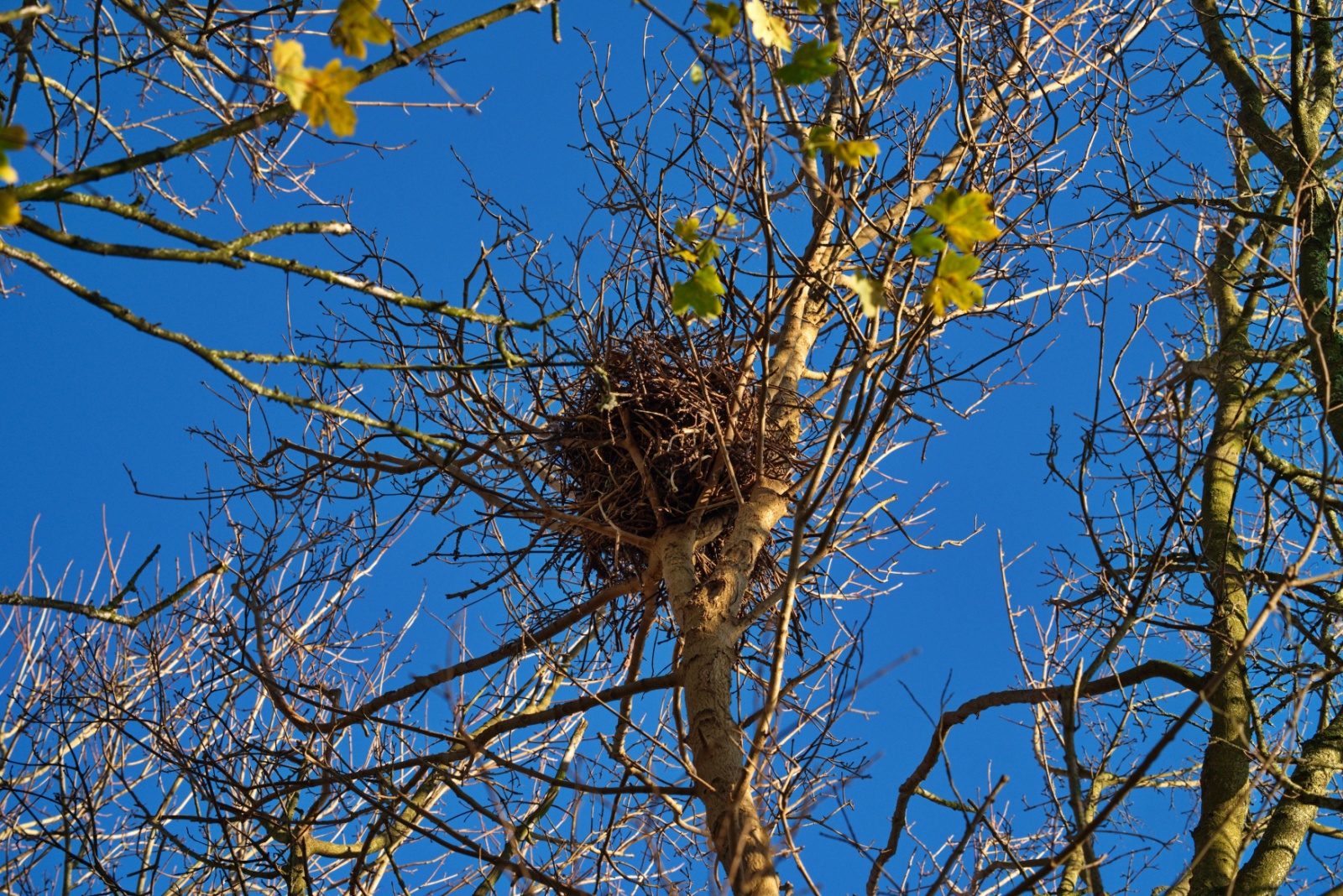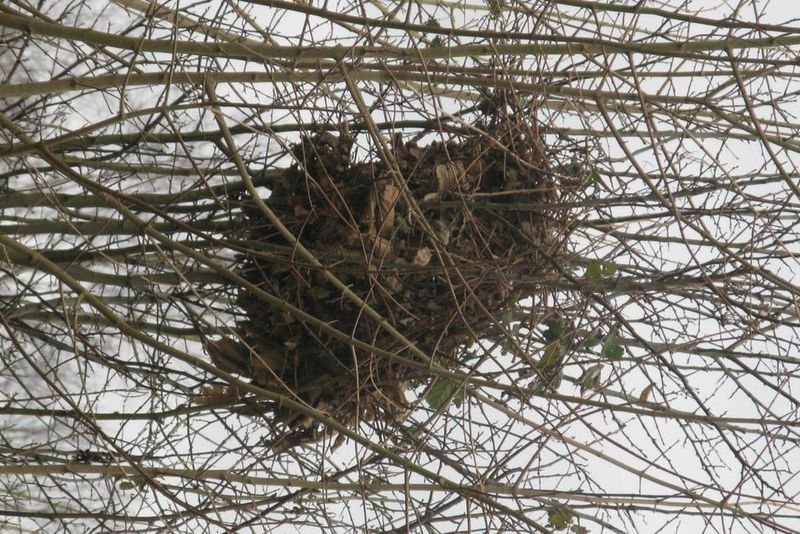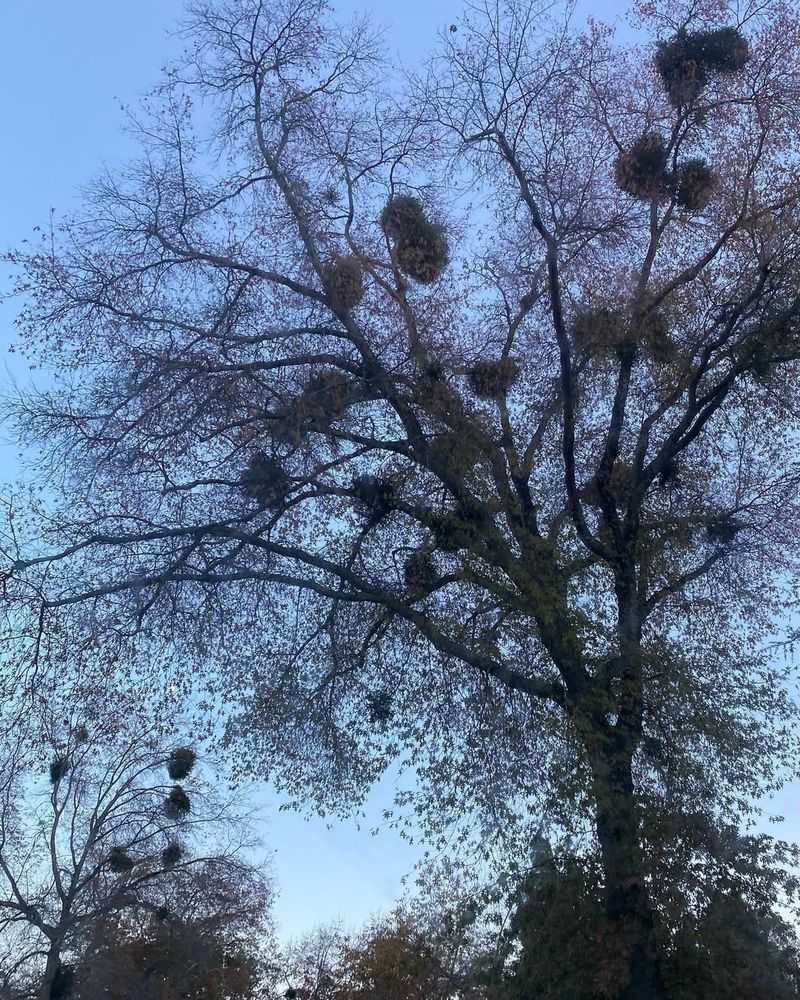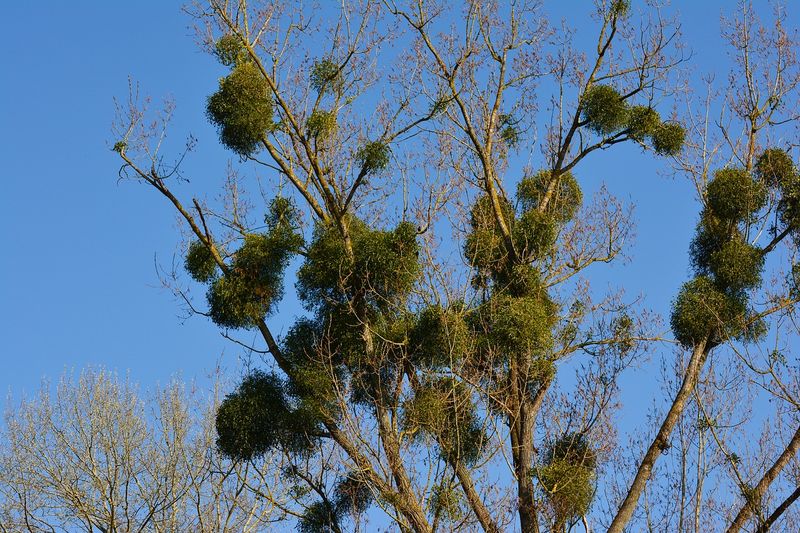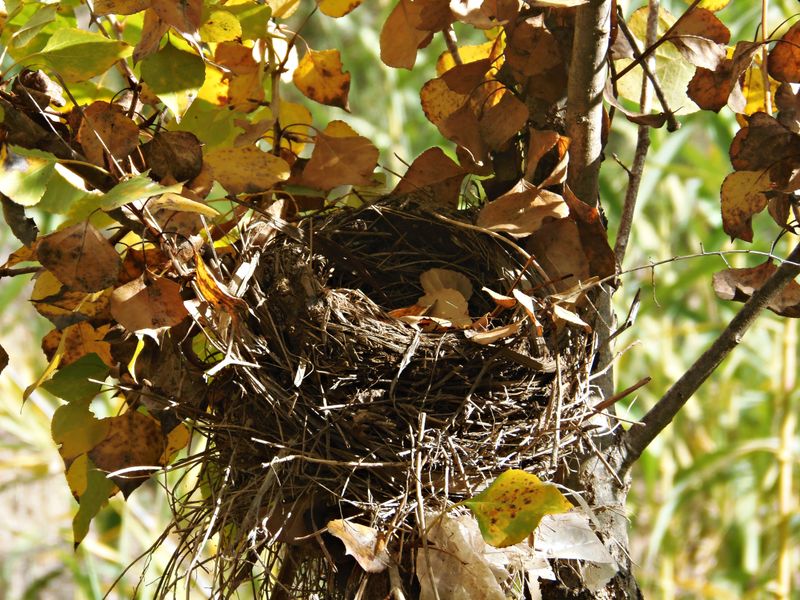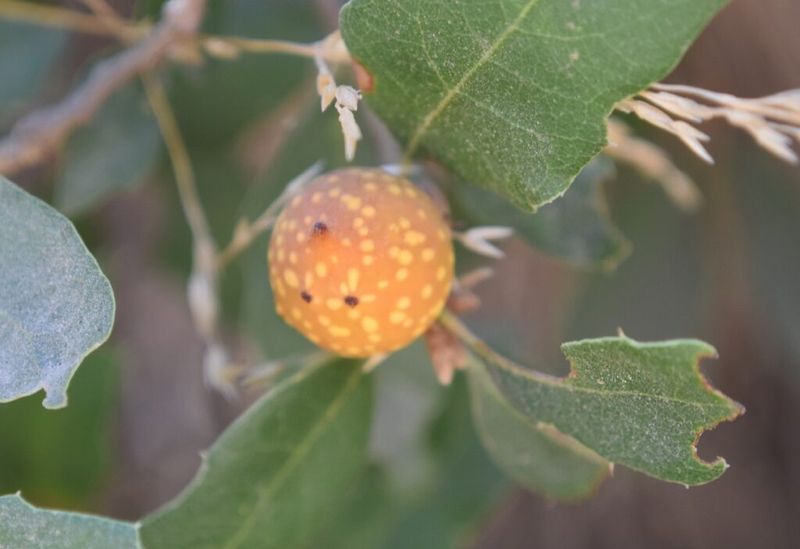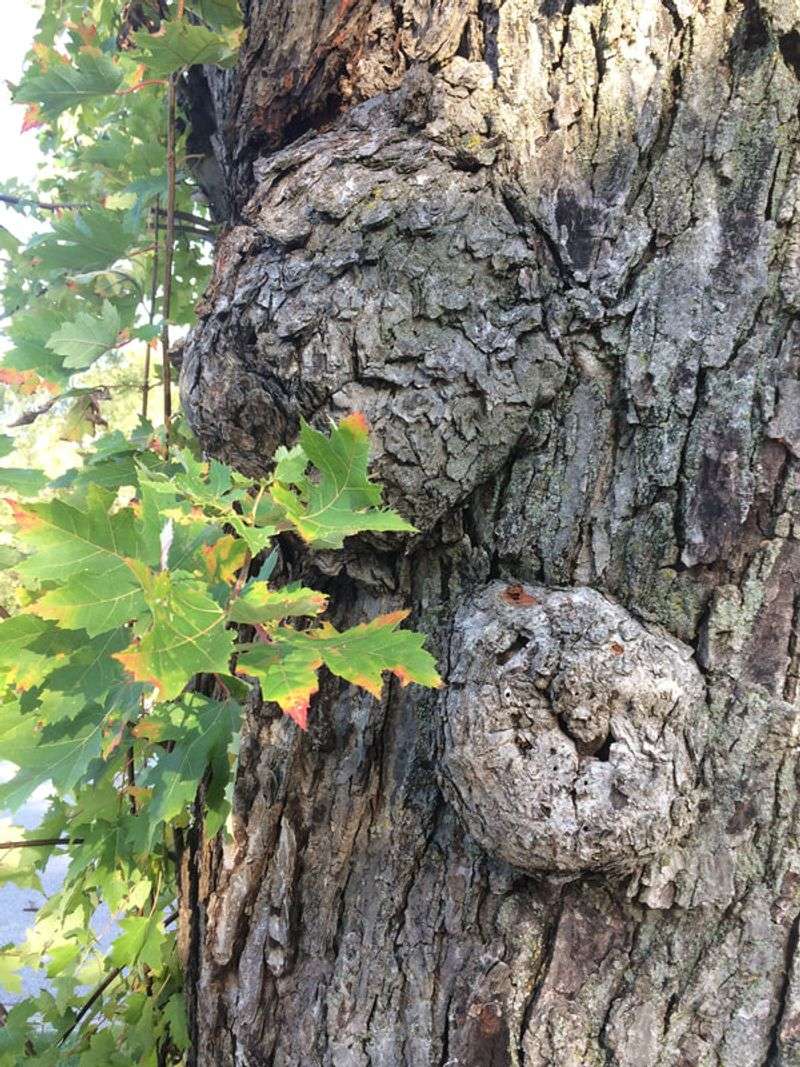Ever noticed a big clump of leaves high up in an Oregon tree and wondered what it was? At first glance, it might look like a messy bird nest or just some stray debris. But that leafy ball could be something much more interesting.
From squirrel dreys to mistletoe or even insect nests, Oregon’s trees are full of surprises. I’ve learned not to jump to conclusions when I spot one. Nature has a way of hiding fascinating stories in the branches above.
1. Squirrel Dreys Are Architectural Masterpieces
Squirrels build elaborate nests called dreys that look like messy leaf piles from below. Eastern gray squirrels, common in Oregon, weave together twigs, leaves, moss, and bark to create weatherproof homes. Each drey has multiple layers for insulation against rain and cold.
Inside, soft materials like fur and shredded bark line the center chamber. Squirrels often construct several dreys throughout their territory as backup shelters. Next time you see one, remember there’s serious engineering happening up there!
2. Witches’ Broom Disease Creates Weird Growth Clusters
Sometimes that ball isn’t a nest at all but a plant deformity called witches’ broom. Fungi, viruses, or tiny insects called mites cause branches to grow abnormally dense and tangled. The result looks like someone stuck a broom in the tree.
These growths won’t kill the tree but they do look pretty strange. Douglas firs and other conifers in Oregon commonly develop witches’ broom. The name comes from old folklore where people thought witches used these branches for their broomsticks!
3. Mistletoe Clumps Aren’t Just Holiday Decorations
Oregon hosts several mistletoe species that grow as parasitic plants on tree branches. Dwarf mistletoe creates dense, bushy clumps that absorb water and nutrients from host trees. Unlike the holiday variety, these species form permanent rounded masses throughout the year.
While romantic for kissing traditions, mistletoe actually weakens trees over time. Birds spread mistletoe seeds by eating the berries and depositing them on branches. Those mysterious green balls might be slowly sapping your tree’s strength!
4. Abandoned Bird Nests Get Bigger Over Time
Crows, ravens, and hawks build substantial stick nests that persist for years after abandonment. Wind, rain, and falling leaves gradually accumulate around the original structure. What started as a tidy nest transforms into a shaggy leaf ball over several seasons.
Other animals sometimes move into these abandoned structures, adding their own materials. Squirrels particularly enjoy renovating old bird nests rather than starting from scratch. That leafy sphere might have housed multiple species across different years!
5. Galls Form When Insects Hijack Tree Growth
Certain wasps and flies inject chemicals into tree tissue that cause abnormal growths called galls. Oak trees especially produce large, round galls that resemble leafy balls from a distance. Each gall provides shelter and food for developing insect larvae inside.
Oregon white oaks commonly host various gall-forming insects. The tree essentially builds a custom home for the bug’s babies, though it doesn’t harm the tree much. When you spot one, there’s likely a tiny insect nursery happening inside that strange growth!
6. Burl Growths Look Like Lumpy Leaf Clusters
Burls are woody tumor-like growths on trees caused by stress, injury, or genetic factors. When covered with sprouting shoots and leaves, burls create dense spherical clusters. Big leaf maples in Oregon frequently develop impressive burls on their trunks and branches.
Woodworkers prize burl wood for its beautiful swirling grain patterns. The tree keeps growing around the burl, adding more layers each year. From below, these leafy eruptions might look like nests, but they’re actually part of the tree itself responding to some ancient injury!

